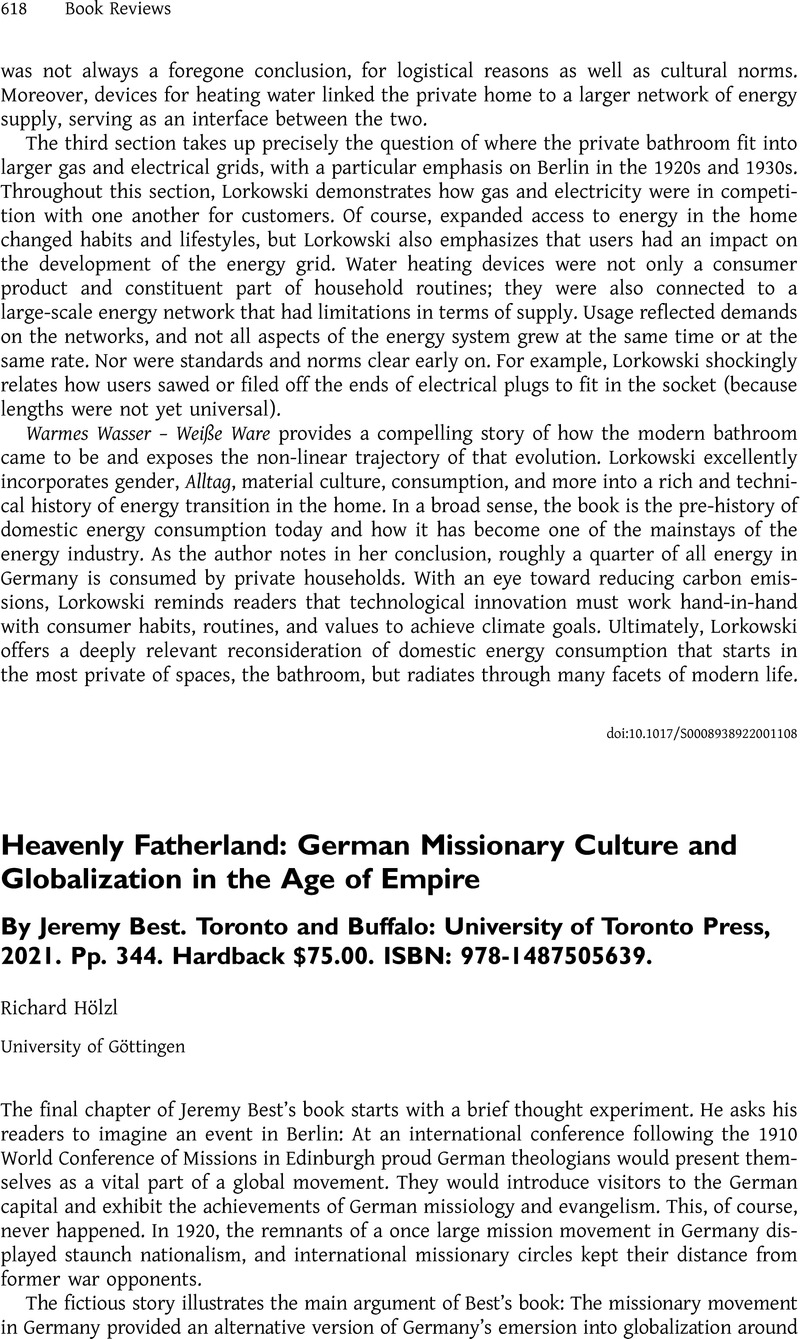No CrossRef data available.
Article contents
Heavenly Fatherland: German Missionary Culture and Globalization in the Age of Empire By Jeremy Best. Toronto and Buffalo: University of Toronto Press, 2021. Pp. 344. Hardback $75.00. ISBN: 978-1487505639.
Review products
Heavenly Fatherland: German Missionary Culture and Globalization in the Age of Empire By Jeremy Best. Toronto and Buffalo: University of Toronto Press, 2021. Pp. 344. Hardback $75.00. ISBN: 978-1487505639.
Published online by Cambridge University Press: 05 January 2023
Abstract
An abstract is not available for this content so a preview has been provided. Please use the Get access link above for information on how to access this content.

- Type
- Book Review
- Information
- Copyright
- Copyright © The Author(s), 2022. Published by Cambridge University Press on behalf of Central European History Society of the American Historical Association


